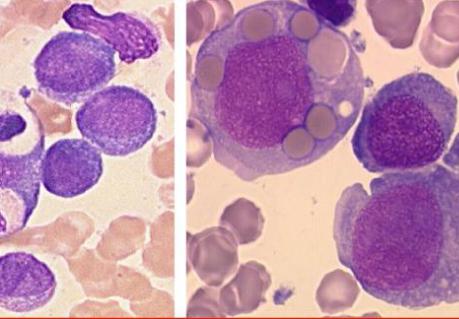Cell division: a description of the main processes
Cell division is a natural process,which provides normal growth, development and reproduction of the body. This increases the number of cells, tissue growth, sexual reproduction and the transfer of hereditary material. The main types of cell division are meiosis and mitosis. Each of these processes has some features.
Mitosis
Mitosis is the division of cells, ultimatelyof which two daughter cells are formed from the mother cell with identical number and order of chromosomes. Such processes constantly occur with somatic cells of the body, providing growth, development, regeneration of tissues and organs.
The life cycle of a cell can be divided intointerphase and mitosis. Interphase is the so-called stage of calmness, during which an active synthesis and accumulation of substances necessary for cell division takes place. Closer to the beginning of mitosis, the number of chromosomes doubles.
Mitosis is usually divided into four main stages.
- Prophase. During this period, you can notice the onset of chromosome condensation. Two identical chromosomes are connected by a single centromere. At the beginning of the prophase, the centriole is divided. Now two daughter centrioles begin to slowly diverge to the two opposite sides of the cell. At the same time, they remain bound by thin protein strands - thus forming the fission spindle. By the end of this stage, the chromosomes greatly shorten and become thicker and move towards the equator of the cell.
- Metaphase is a very short stage that begins with the alignment of chromosomes along the equator of the cell. Approximately at the same time, centromere division occurs simultaneously in all chromosomes.
- Anaphase - the filament spindle thread is fixed incentromere chromosome. During this period, the daughter chromosomes slowly move to opposite poles. It is believed that the fibers of the fission spindle not only direct the chromosomes, but also because of the presence of ATP are reduced, speeding up their divergence.
- Telophase - begins at the moment whenthe chromosomes have already dispersed to the poles. They unwound and become less noticeable - they return to a state of rest. Around the conglomeration of chromatin there is a synthesis of a new nuclear envelope. In parallel with these, cell division occurs - the cytoplasm and organelles are equally divided among the daughter formations.
Meiosis
Meiosis is a method of cell division, duringwhich forms four gametes with a single set of chromosomes. Such processes occur during the formation of germ cells - spermatozoa, oocytes (the plant thus produces spores). Such processes ensure the exchange of genetic material and combinatorial variability. When two gametes merge, each of which contains only half of the genetic material, the number of chromosomes is restored, but their sequence changes.
The gamete formation process consists of twoshort meiotic divisions, in each of which it is possible to distinguish all the above-described stages. But between the two divisions there is no pronounced interphase, and DNA synthesis does not occur. Consequently, two cells with a single set of chromosomes enter the second prophase (in man it is 46). The result of the second division is 4 gametes, which have 23 chromosomes each.
Amitosis
Amitosis is an uncharacteristic cell division,which is observed quite rarely. In this case, the cell retains all the physiological functions. During this process, there is no duplication of genetic material and cell division. Only the nucleus is divided, but without the formation of a spindle of division. As a result of this process, the chromosomes diverge in a random order - a multinucleate cell is formed. It should be noted that amitosis, as a rule, occurs either in aging and dying cells, or in pathologically altered structures (tumor cells).
</ p>



